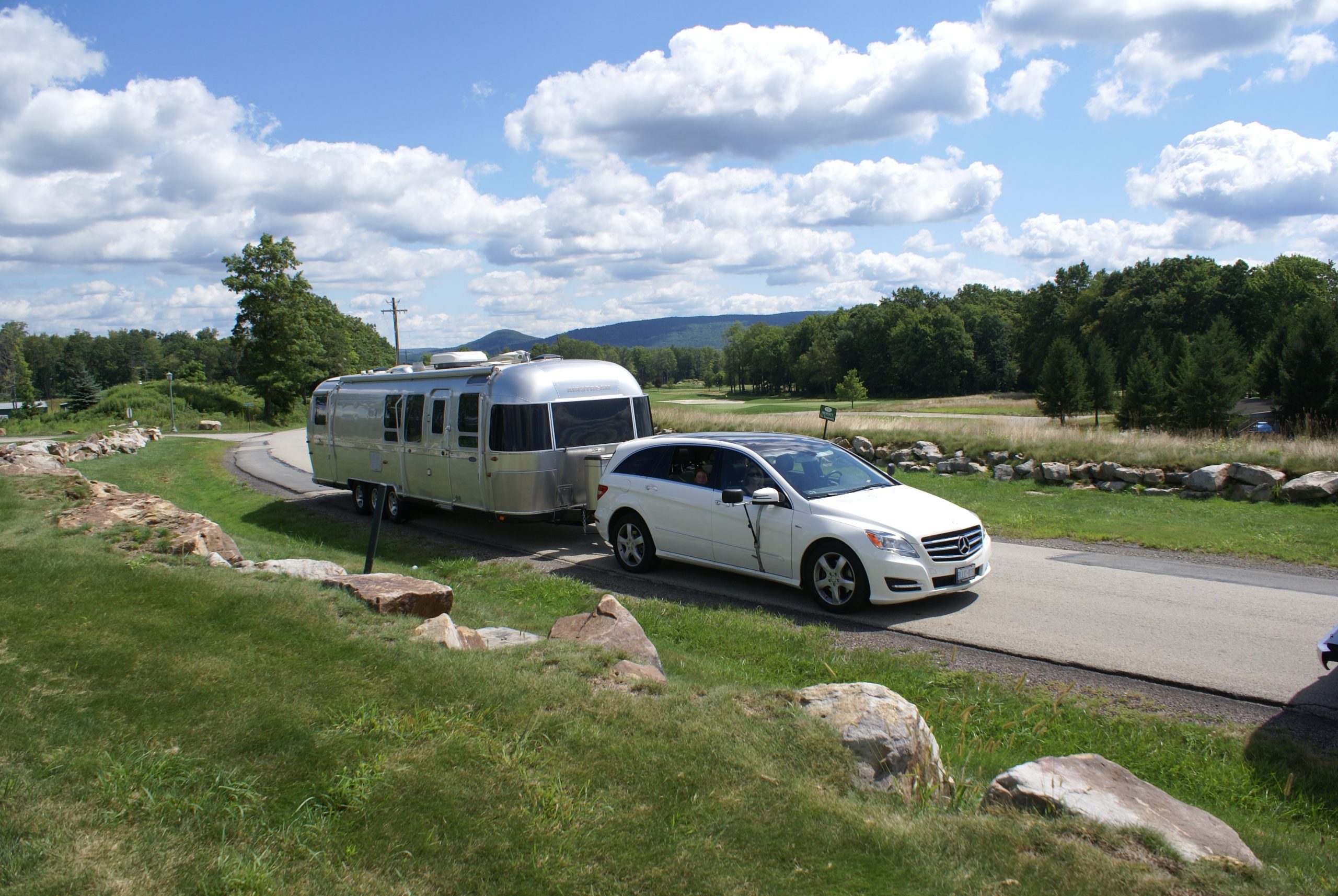Hitch Hints – Why You Want a Tri-Axle
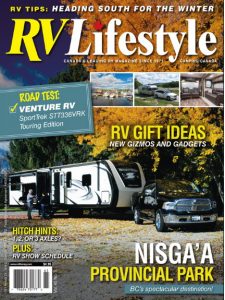 From the Archives…
From the Archives…
This article appeared in RV Lifestyle Magazine Volume 45 Number 5.
With the demand for new RVs running at record levels, many people are looking at gently used and vintage trailers. In this Hitch Hints article from our archives, Andy Thomson discusses the advantages of choosing a tri-axle trailer.
To read the full content of this issue, please follow this link: https://www.rvlifemag.com/rv-lifestyle-45-5-venture-rv-sporttrek-stt336vrk/
If you are prompted for a password, please use RVLFREE2017
Why You Want a Tri-Axle
One axle, two axles, three axles or four – in a large trailer design, go for more…
By Andy Thomson
One of my favourite travel trailers to tow is a 34’ Airstream tri-axle. It rides smoothly, handles wonderfully and stops amazingly well. My favourite fifth wheel to tow is a 38’ SnowVilla with a tri-axle. Unfortunately, neither of these trailers is built any longer, and nothing built today is comparable. We sell similar products but they are now built on tandem axles.
Both travel trailers and fifth wheels in the 34-foot and larger category would be so much better on a tri-axle, but the manufacturers build them on tandem axles so they will sell better. It seems that many buyers have a mental block about buying a tri-axle trailer – apparently it gives them the impression that it will be hard to tow – or my favorite complaint, that tolls will be higher based on the number of axles.
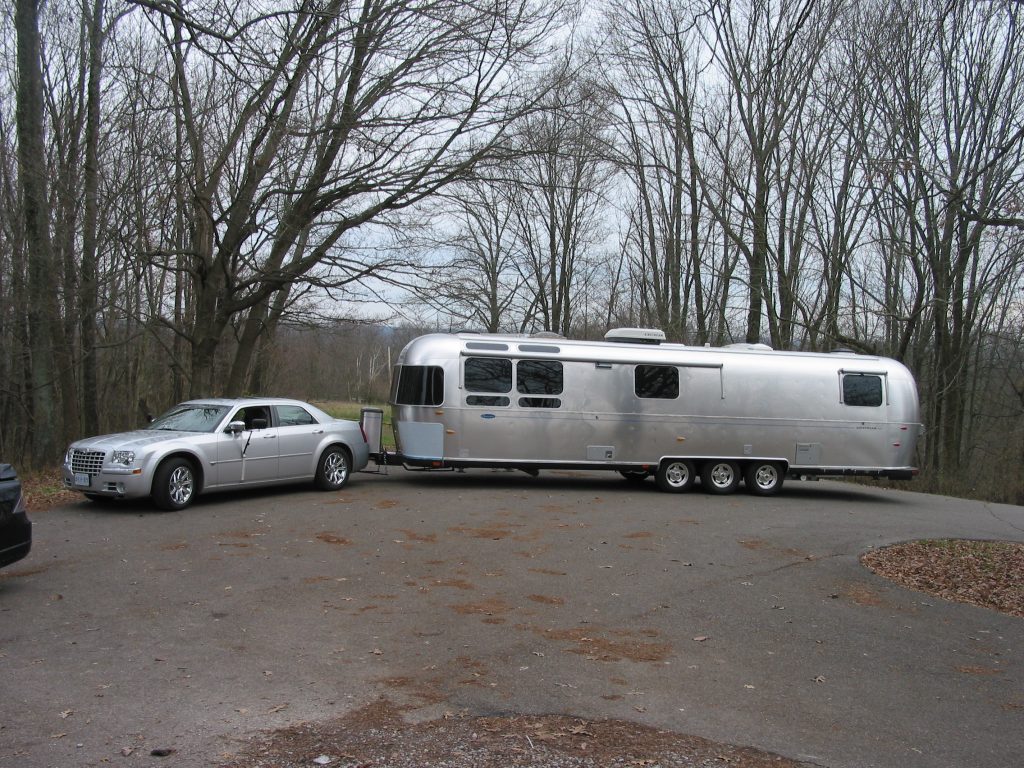
This is an interesting discussion because the inexperienced RV shoppers I talk to often want a tandem axle when it does not make sense, where the trailer is not heavy enough or too short to control a tandem. Let me explain this in a bit more detail… A trailer with a tandem axle is going to want to go straight ahead at a turn, which is fine if the hitch ball is far enough from the axle to have the leverage to override this tendency. So, for example, you do not want a tandem axle on a 15’ trailer. The option is to put very small tires on the 15’ trailer so the axle spread is shorter, but the smaller tires have their own set of problems: harder ride, tiny brakes etc. So at the small end of the market we have to explain why you don’t want a tandem axle in a small trailer – the result is that many customers go to a slightly larger trailer just to get the tandem axle. This is not a bad idea, as a slightly larger trailer with a tandem axle will often ride and handle better than the shorter version on a single axle. The bottom line is that many RV buyers are very focused on getting that extra axle.
So is it really strange to note that the more experienced RV enthusiasts purchasing large units think that a tri-axle would be bad? They wanted the tandem on their first RV but don’t seem to be able to get their head around a third axle on their new larger trailer. It boggles my mind, so let’s look at why a tri-axle works better than a tandem on larger trailers and fifth wheels.
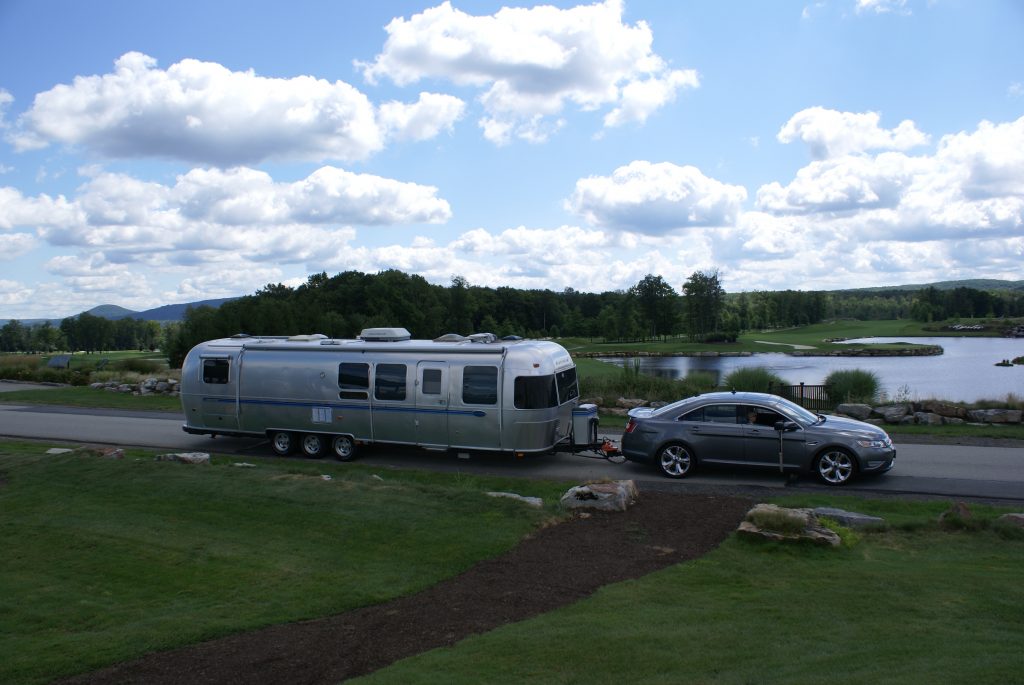
Ride Characteristics
A tri-axle on a larger trailer means that you will have 6 soft suspensions instead of 4 stiff suspensions. For example, let’s use a 38’ fifth wheel that weighs 16,000 pounds loaded, with 13,000 pounds on the axles (the balance of the weight would be on the hitch pin). This fifth wheel, built as a tandem, will need 7,000-pound capacity axles so it would have 3,500-pound individual wheel suspensions. This trailer would require at least “G” rated tires that are rated to be inflated to 110 PSI, although they will only need 90 PSI to carry the weight. However, a G rated tire at 90 PSI is still a pretty harsh riding tire.
If you build the same fifth wheel with a tri-axle you would use three 6,000 pound axles with 4,800 pound springs, so it would have 2,400 pound individual suspensions and E range tires rated to carry 80 PSI, but they only need 60 PSI to carry the trailer.
These much softer tires and springs still have the same amount of weight on top of them when they encounter an individual wheel bump. The 2,400-pound suspension and 60 PSI tire will simply absorb the bump with very little input into the trailer chassis. The 3500 pound springs with 90 PSI tires on a dual axle trailer of the same size and weight will transmit far more road harshness into the chassis.
The same logic applies to a travel trailer of similar size and weight. For example, a 34’ Airstream rides on three 3,200 pound axles, so each suspension is rated to carry 1,600 pounds. Depending on the tire chosen, it will only require 40 to 45 PSI of air to carry the load. If this was built as a tandem, it would need to have 5,000 pound axles and E range tires carrying 75 PSI of pressure, so again no contest on ride smoothness.
When I discuss this with RV enthusiasts, the reaction is often “so why would you care about how the trailer rides – after all you are not riding in it?” There are several benefits to a softer riding trailer: your belongings move around much less inside, when the trailer is built on a tri-axle. In fact, one time one of our customers drove 60 miles with his coffee mug on the back bumper of his tri-axle Airstream. Didn’t spill a drop.
Since the tri-axle trailer rides so smoothly, very little front to rear surge is transmitted to the tow vehicle. RVs are long, so when it hits a bump the forces impact a great deal on the frame and body structure, if it rides softer it can be built lighter, and it can last considerably longer. One of our customers has enjoyed more than 200,000 kilometers towing a 1999 39’ NuWa fifth wheel trailer, without having any structural issues.
Another ride benefit is that if the trailer has independent suspension it will have considerably less front to rear pitch, which affects the ride comfort in the tow vehicle.
Handling
It would be easy to assume that the much softer suspension of the tri-axle would not be as stable as the firmer tandem axle. However, it is actually more stable. While the suspension is soft when it encounters a bump, when there is a side force on the trailer from a cross wind or a sudden lane change the 3 soft suspensions combine to form a firm suspension. This produces just as much roll stiffness as the tandem axle model and if the trailer has shocks you have 50% more shock control. The tri-axle also inherently wants to track straighter on the highway, so you can have better handling with less hitch or pin weight. In the case of a large fifth wheel, this can make the difference between having to use a dual or single wheel truck.
Braking
This element of the performance of tri-axle trailers compared to tandem axle models is pretty simple – with the tri-axle you get 6 brakes instead of 4, and far more tire footprint.
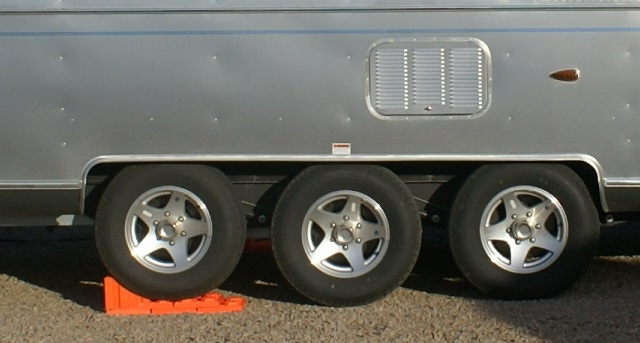
Disadvantages of the Tri-Axle Chassis
In most applications, any disadvantages of a tri-axle are more perceived than actual, but there are some: one disadvantage is that the trailer can push the back wheels of the tow vehicle sideways if you are transitioning from pavement to a slippery surface. For example, turning from a dry paved main road onto a snow covered side-street. The trailer tires will be in line on the pavement, trying to go straight ahead, but the tow vehicle will be around the corner on the snow and it may not have enough traction to force the trailer to turn. The easy way out of this situation is to apply just the trailer brakes. It should rarely be an issue, although I have experienced it a couple of times in winter conditions.
The second disadvantage is the cost of building and maintaining a unit with an extra set of wheels. Still, in the overall cost structure this is relatively minor.
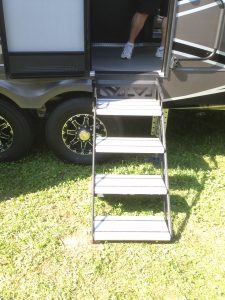 The third disadvantage on fifth wheels is that adding a third axle would have a negative effect on the trailer’s layout. Since the entrance door cannot go where a wheel is located, the door would have to be placed farther forward than is desired for an optimal layout. That has been the case until recently, when Mor-Ryde introduced a new entry step system that swings inside the trailer for travel, so now the doorway can be placed above wheels or even in a slide-out.
The third disadvantage on fifth wheels is that adding a third axle would have a negative effect on the trailer’s layout. Since the entrance door cannot go where a wheel is located, the door would have to be placed farther forward than is desired for an optimal layout. That has been the case until recently, when Mor-Ryde introduced a new entry step system that swings inside the trailer for travel, so now the doorway can be placed above wheels or even in a slide-out.
This step system works much easier than a traditional quad step, and more importantly allows the door to go where it has never gone before – over the wheels, even in a slide out.
Perceived Disadvantages
Some RV enthusiasts feel that tri-axle will be harder to tow than a tandem. With the size of units these are used on, there is so little difference in rolling resistance that it is virtually impossible to perceive any difference in drag. The other objection is that there will be too much scrubbing of the tires when turning, but this is actually less than what you experience with a tandem. Although the tires slide farther on a triple because there is so much less weight per tire, the scrubbing effect is actually less with a tri-axle than it is with a tandem.
The Bottom Line
In conclusion, a triple axle is one of those great features that allows you to have your cake and eat it too. The tri-axle delivers a much smoother ride, better handling, and safer stopping. Maybe if enough of us ask for tri-axles the RV manufacturers will start offering them again – without going to 45’ trailer lengths!
Andy


















